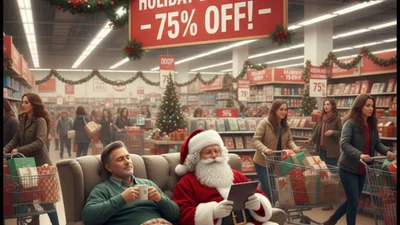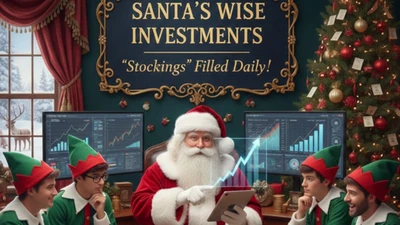President Donald Trump’s latest tariff salvo—10% on all imports, 25% on Canada and Mexico, and an extra 10% on China—has the logistics market in a tailspin. For investors with a conservative bent, this isn’t just a storm to weather; it’s a chance to double down on American resilience. The talking heads on CNBC and the Keynesian crowd might bemoan rising costs and supply chain snarls, but from a conservative standpoint, these challenges are the growing pains of a nation reclaiming its economic destiny. Let’s unpack the logistics landscape under tariffs and why savvy investors should see opportunity where others see obstacles.
Freight Costs on the Rise: A Wake-Up Call, Not a Crisis
The math is straightforward: tariffs jack up the price of imported goods, and that hits transportation hard. Trucking rates are climbing—analysts on X note spot rates ticking up 5-10% since the tariff announcement on April 2—because shippers are scrambling to move goods before duties fully bite. Warehouses are bulging with preemptive stockpiles, and cross-border hauls from Canada and Mexico are getting pricier with that 25% levy. The left calls this chaos; conservatives call it accountability. For decades, cheap foreign goods flooded our shores, subsidized by lax trade deals that gutted American manufacturing. Now, logistics firms face a reckoning: adapt to a tariffed world or fade away. Investors should eye companies like J.B. Hunt or Old Dominion—outfits with strong domestic networks—because they’re poised to pivot where globalists stumble.
Border Bottlenecks: Sovereignty’s Speed Bump
Cross-border logistics is taking the hardest hit. Canada and Mexico, our top trade partners, now face steep tariffs, and the ripple effects are immediate. Truckers hauling steel from Ontario or avocados from Jalisco are stuck in longer queues as customs tightens up—FreightWaves pegs border delays at 20% above normal. Fuel costs are creeping up too, thanks to that 10% tariff on Canadian energy exports. Liberals wail about “inefficiency,” but conservatives know this is the cost of sovereignty. Porous borders and free-flowing trade enriched NAFTA cronies while leaving our workers high and dry. These bottlenecks force a rethink: why rely on foreign supply chains when we can build our own? Investors should watch rail giants like Union Pacific, which can shift focus to intra-U.S. routes, and steer clear of border-heavy operators unless they’ve got a tariff-proof playbook.
Capacity Crunch: A Market That Rewards the Nimble
The tariff squeeze is exposing a truth conservatives have long championed: overreliance on globalism leaves you vulnerable. Logistics capacity—trucks, drivers, warehouse space—is stretched thin as firms rush to reroute or onshore supply chains. Driver shortages, already a headache pre-tariffs, are worsening as demand spikes. Warehouse vacancy rates are dropping—CBRE data shows a dip below 4% in key hubs like Dallas and Chicago. Sure, this drives up costs, and the Tax Foundation frets about a 0.5% GDP dent from logistics friction. But here’s the conservative spin: this crunch rewards companies that innovate. Firms investing in automation, like XPO Logistics, or expanding U.S.-centric fleets stand to gain. Investors should hunt for players who see tariffs not as a burden but as a signal to double down on America-first strategies.
China’s Retaliation: A Test of American Grit
China’s counterpunch—10-15% tariffs on U.S. exports—hits logistics from the other side. Ports like Long Beach, once humming with Chinese imports, are quieter, while exporters scramble to redirect goods elsewhere. Shipping rates for U.S.-bound containers are softening, but outbound lanes are a mess as agricultural loads pile up. The progressive crowd cries foul, but conservatives see a silver lining: this forces us to wean off China’s teat. Logistics firms with flexibility—think FedEx with its global reach or regional carriers pivoting to domestic demand—will thrive. Investors should bet on outfits that can weather Beijing’s tantrum and tap into Trump’s vision of self-reliance over subservience.
The Conservative Investor’s Playbook
Tariffs aren’t a glitch; they’re a feature of a government finally putting America first. Yes, logistics faces headwinds—higher costs, tighter capacity, and trade friction—but conservatives don’t flinch at hard choices. This is about breaking the chains of global dependency, and the market will reward those who get it. Dump the whiners stuck in the old NAFTA playbook; back the winners who embrace the tariff reality. Look for logistics firms with strong U.S. footprints, tech-driven efficiency, and a knack for dodging border traps. The data backs this up: S&P’s logistics index is wobbly but not collapsing—smart money sees the dip as a buy signal.
Trump’s tariffs are a gut check for the logistics market, no doubt. But for conservative investors, they’re also a clarion call: invest in companies that reflect our values—grit, independence, and an unshakable belief in America’s ability to adapt and win. The road’s bumpy, but the destination’s worth it.










